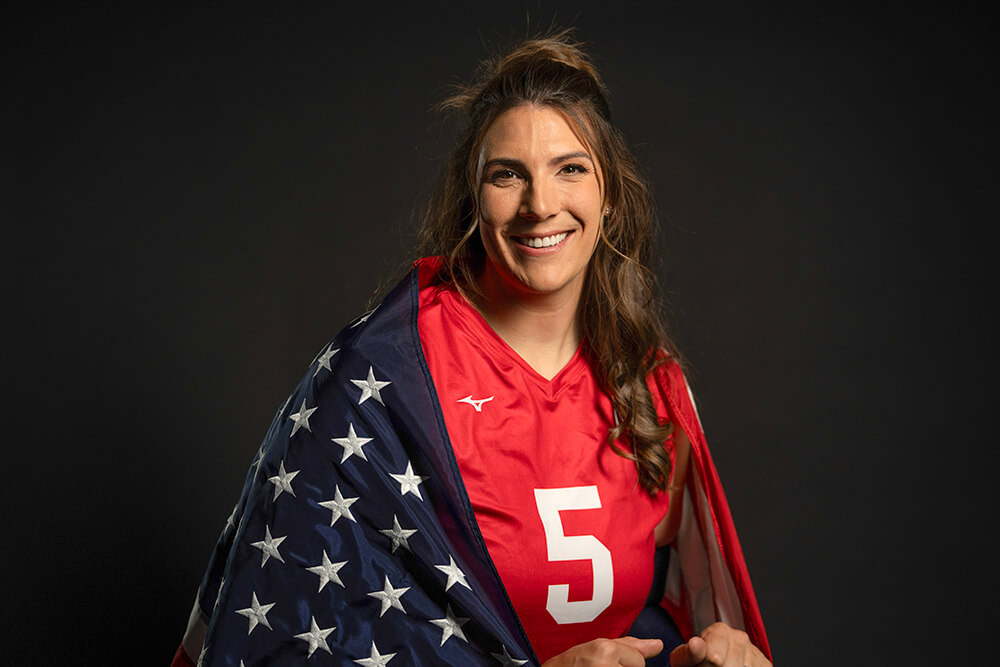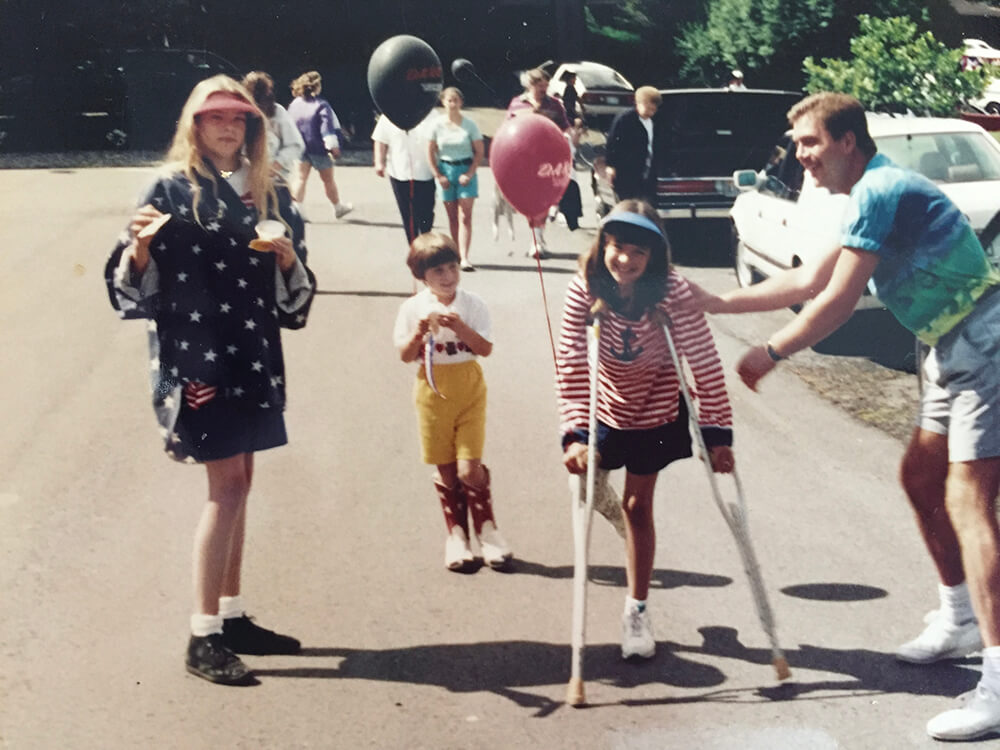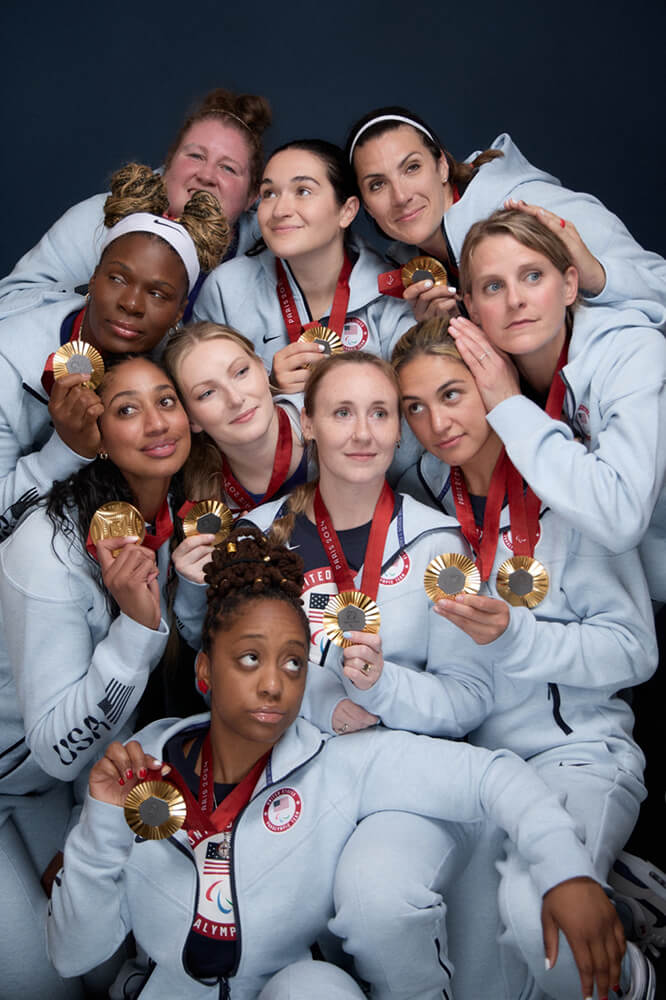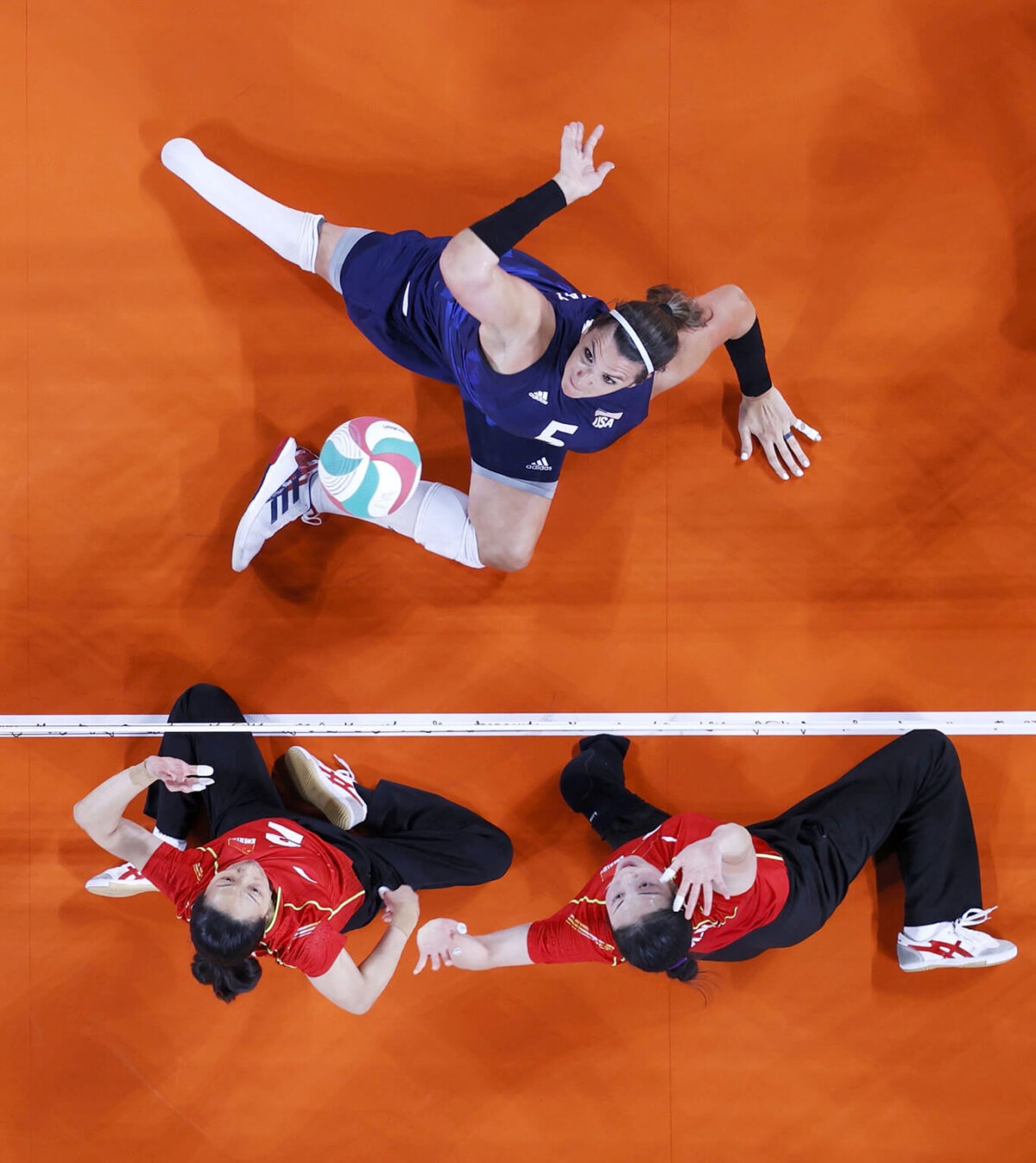Words by Johanna Harlow
When Katie Holloway Bridge lists off her sports injuries, she does so with the casual air of one who recognizes this comes with being a professional athlete. “I’ve had dislocated pinkies. I broke this bone in my eye and I’ve broken my right hand,” says the sitting volleyball athlete and five-time Paralympian. She shrugs off a torn hip. “It’s not something I take time off for. It’s just going to be there.” When Katie takes to the court, her inner warrior awakes. “It’s not me at all!” she promises. But “when I get angry, I play better. I’m like, ‘How dare you think that you’ve worked harder than me? That you deserve this more than me and my teammates?’… I play with a chip on my shoulder.”
From the start, the six-foot-three athlete fought for her place on the roster. Born without a fibula in her right leg, Katie underwent amputation as a toddler. While that didn’t keep her from playing sports (trying basketball, T-ball and soccer at the age of four), she wasn’t as fast as the other children. “I was cut from a lot of sports teams growing up and just felt like I always had to prove myself,” Katie says. And the other kids weren’t always kind. “I was the tallest girl, I had one leg—you name it, I was ‘the other,’” observes Katie. Middle school girls could be particularly mean, especially behind the closed doors of the locker room. Katie took to hiding her prosthetic with tall socks and long pants. “I got out of high school swimming when I was a freshman because I was terrified of taking my leg off and being in front of people.”

But competition is in her blood. Katie’s father played football for Central Washington University, her professional golfer cousins took to the green and her sister sank baskets at Seattle University. Katie’s persistence paid off, earning her a spot on the basketball team at California State University, Northridge. Though she didn’t know it at the time, Katie was the first female amputee to compete at the NCAA Division I level. “I just want to be treated like everyone else,” she says with a shrug.
Looking back, the professional athlete notes, “College basketball was … a lot.” Katie makes an expression somewhere between a grin and a grimace. “I’m very proud of playing at the D1 level, but also, every day, hated it.” She pulled through thanks to daily calls to her family. “I also walked away with lifelong friendships and knowing how much I could withstand,” she reflects. It was also at Northridge where Katie fell in love with an entirely different sport involving a court and a net.

The U.S. sitting volleyball team only spent a brief stint training on Katie’s college campus, but it was just long enough for her to get hooked. “It found me,” Katie says of Paralympic sports. “There were women like myself who were amputees who loved exactly who they were … it transformed my life.” Thoughtfully, she adds that it happened at just the right moment. “I was very moldable in that time of my life.”
That doesn’t mean sitting volleyball didn’t take some getting used to. Accustomed to tough-love coaching, Katie didn’t know what to make of all the positive reinforcement. During basketball practices, “We would miss a shot and we’d run … you’d be half effort and we’d run. I am haunted by the word baseline.” Volleyball on the other hand? “It’s like, ‘Out of those 10 balls, you did eight well. What did you do right?’” she describes with a chuckle. “That was hard to get used to!”

But adjust she did. Five Paralympic games later, Katie is at the pinnacle of her sport. “In the first part of my career, we were chasing down gold and we were the underdogs. I’ve always been an underdog, so I feel like that’s a really good place for me to be mentally,” she notes. After winning silver medals at both the Beijing and London Paralympics, Katie’s team took gold at the following three games. After winning in Rio, there was more pressure to be perfect, she notes. “In Tokyo and then in Paris, we were who people were going after. All the eyeballs are on you.” The best countermeasure? “Trust the process and trust your teammates,” Katie says. “Trust you’ve done everything you can—and just play the game.”
After the glamour of the games fades away, it’s back to business as usual. Katie trains at the Riekes Center in Menlo Park, a multipurpose space with athletic facilities and recording studios that supports veteran and adaptive sports. “Whatever you need, we’re here for you,” they told Katie when she first moved to the area. “And that’s been true ever since,” she says. “They’ve been my center and my rock!” The center even lent her a studio to record Inside Parasport, a podcast Katie hosted with Paralympic swimmer and cyclist Kelly Crowley.

What does Katie wish more people knew about Paralympians? “We’re elite athletes, and it’s not just about our sob story,” she declares. “We operate at the highest level in our sport with a very unequal amount of resources so we often have full-time jobs.”
But the persistence of these Paralympians pays off when they’re proudly standing before the world. Nothing beats that charged moment of walking into the opening ceremonies at your very first Paralympic Games, says Katie. “The lights come on you and you walk out of the tunnel and it’s just this wall of sound. All you can hear is ‘U-S-A! U-S-A! U-S-A!’ It gives you goosebumps.”


